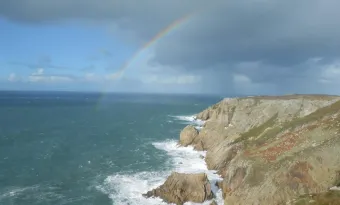
- Storm patterns have been moving towards the poles since the 1990s increasing the number of storms and storm force winds
- Wave height from these storms have decreased over the last 30 years in the North of the UK and increased in the South
- Continued high rates of damaging emissions could increase the height of severe waves by 2100
Scientists from the National Oceanography Centre (NOC) have authored a report for the UK Marine Climate Change Impacts Partnership (MCCIP) that shows how UK seas could see significantly higher waves and stronger storms as a result of climate change. The increase in wave heights can be attributed to a variety of factors, including the effect of sea ice loss in the Arctic that has led to sea level rise and increasing wave heights over the period 1992-2014.
The report is part of the MCCIP’s activity to bring cutting-edge science and research to the forefront for scientists, stakeholders, industry bodies and policymakers, helping to inform future policy. The report will directly feed into future reports such as the Climate Change Risk Assessment Report, which will assist in planning protections against the threat of future climate change which will exacerbate more extreme weather events.
Storm-force winds that have been felt with increasing frequency since the 1990’s, can cause significant damage in the UK’s coastal waters, particularly in autumn and winter when strong winds are more intense. In order to ensure the sustainable development of coastal and offshore infrastructure as well as the management of coastal resources and ecosystems, the report states the importance of understanding the characteristics and variability of the climate of waves and the projected future change.
Dr Lucy Bricheno, Head of Shelf and Coastal Impacts and the lead author on the report from the National Oceanography Centre, said; “Storms and waves can have a dramatic impact on our society and especially to people living near the coast, and disrupt offshore construction and operations. Storms bring high wind and heavy rain, which can lead to damaging coastal flooding. This report opens the door for future research to be carried out to understand the causes and likelihood of severe storms occurring as well as informing the most efficient ways to plan coastal defences.”
The report also shows the inter-connectivity of different regional weather patterns. For example, the chance of severe storms reaching UK shores during the autumn period can be more likely if tropical cyclones such as hurricanes become more intense, and their region of origin expands northwards.
This work supports our goal to undertake big science for big challenges, including understanding climate change and variability.